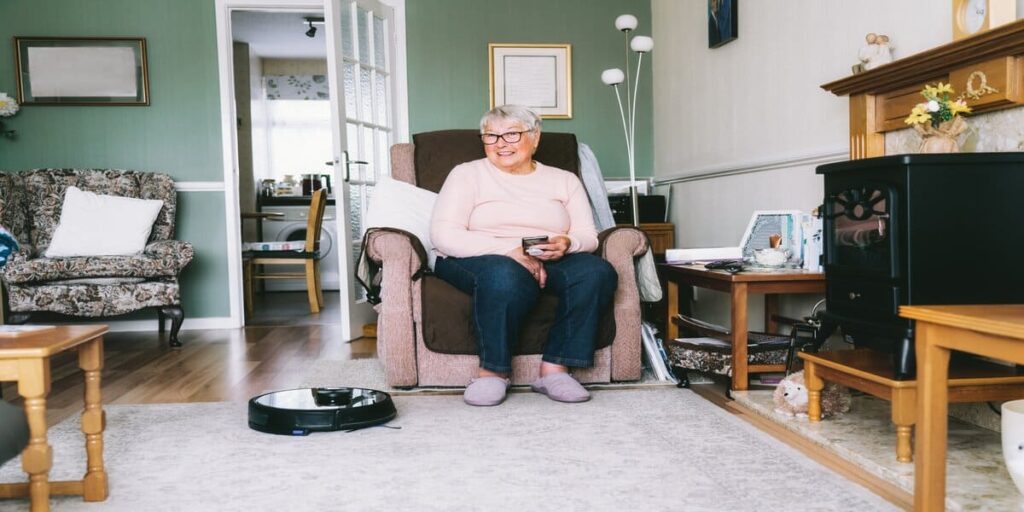As we age, our mobility and needs change. This is why home renovation is essential for seniors. By modifying their living space to fit their current needs, seniors can maintain their independence and safety in the comfort of their own homes. Home renovations tips can also help seniors adapt to physical limitations, making moving around and completing daily tasks easier.
One of the main reasons home renovations are important for seniors is to ensure safety, accessibility, and comfort in their living environment. As we age, our bodies become more vulnerable to accidents and injuries. Due to limited mobility, seniors can prevent falls and other accidents. Comfort is also crucial, as seniors may have specific needs, such as adjustable-height countertops or easy-to-reach shelves in the kitchen and bathroom. These home renovation tips not only provide convenience but also promote independence and well-being for seniors in their own homes.
Tip 1: Focus on Safety First
Safety should be the top priority when planning home renovations. Seniors may have decreased mobility and balance, making them more prone to accidents. Therefore, it is important to assess potential hazards in their living space and make necessary changes. Remove tripping hazards, install handrails on stairs and ramps, and upgrade lighting fixtures for better visibility. It is also important to consider fire safety in key areas of the house.
In addition, bathrooms and kitchens are high-risk for seniors as they involve wet surfaces and heavy appliances. Installing bathroom grab bars and non-slip flooring in both rooms can greatly reduce the risk of falls. Other safety considerations may include replacing traditional doorknobs with lever handles for easier grip and installing motion-sensor lights to avoid fumbling for light switches in the dark. These safety measures make seniors feel more secure and confident while navigating their homes.

Tip 2: Improve Accessibility
Another important aspect to consider when renovating for seniors is improving accessibility. This means making necessary adjustments to the home so that it can be easily and comfortably navigated by individuals with physical limitations or disabilities. This includes widening doorways and hallways to accommodate mobility devices such as wheelchairs and walkers, installing ramps to enter the house easily, and creating a barrier-free entryway to the bathroom and shower.
In addition, consider installing a stairlift or elevator if the senior’s home has multiple levels. This will provide ease of movement and reduce the risk of falls on stairs. It is also important to ensure that all key areas of the house, such as bedrooms and bathrooms, are located on the main level for easy access. By improving accessibility, seniors can maintain independence and easily move around their homes.
Tip 3: Consider Comfort and Convenience
Aside from safety and accessibility, it is also important to consider seniors’ comfort and convenience when renovating their homes. This may involve upgrading appliances to more user-friendly ones, such as touch-activated faucets or easy-to-use kitchen appliances. It may also include installing adjustable-height countertops and shelves in the kitchen for easier reach.
In addition, consider adding features that can make daily tasks more convenient for seniors, such as a walk-in bathtub or a shower bench. When renovating for maximum comfort and convenience, consulting with the seniors and considering their specific needs and preferences is also helpful.
Tip 4: Make Room for Hobbies and Activities
As seniors retire and have more free time, it is important to consider their hobbies and interests when renovating their homes. This can include creating a designated area for favorite activities such as painting or gardening. For example, installing shelves and storage space for art supplies in a spare room or setting up a small greenhouse in the backyard can encourage seniors to continue pursuing their passions.
Moreover, it is important to make space for social activities and gatherings. This can include creating a cozy seating area in the living room or adding a patio with comfortable outdoor furniture for hosting friends and family. By incorporating spaces for hobbies and socializing, seniors will have a more fulfilling retirement and feel more connected to their homes and community.

Tip 5: Prioritize Energy Efficiency
Energy efficiency is important when renovating for seniors. As we age, our bodies become less tolerant to extreme temperatures, making it crucial to have a comfortable and consistent indoor environment. This can be achieved by upgrading insulation in the walls and attic, sealing drafty windows and doors, and installing energy-efficient HVAC systems.
In addition, consider incorporating natural light and ventilation in the home’s design. This helps reduce energy consumption and promotes a healthy living environment for seniors. Installing energy-efficient appliances can also help save on utility bills. These changes allow seniors to live comfortably in their homes without worrying about high energy costs.
Final Thoughts on Home Renovation Tips
In conclusion, home renovations for seniors are crucial in ensuring their safety, accessibility, comfort, and overall well-being. Seniors can feel confident in their homes by considering safety measures and making necessary modifications to accommodate physical limitations. Improving accessibility allows them to maintain independence and easily navigate their living space. Prioritizing comfort and convenience makes daily tasks easier while creating space for hobbies and social activities, which can enhance their quality of life. Furthermore, prioritizing energy efficiency benefits seniors’ health and helps reduce utility costs.

Frequently Asked Questions
What are some common safety measures to consider when renovating a home for seniors?
Some common safety measures to consider when renovating a home for seniors include installing handrails on stairs and ramps, upgrading lighting fixtures for better visibility, and installing bathroom grab bars and non-slip flooring.
How can accessibility be improved in a senior’s home during renovations?
During renovations, accessibility can be improved in a senior’s home by widening doorways and hallways to accommodate mobility devices, installing ramps for easy entry, creating barrier-free entryways to bathrooms and showers, and installing stairlifts or elevators for multi-level homes.
Are there any specific design considerations to consider when renovating for seniors?
Yes, specific design considerations are made when renovating for seniors. These include incorporating non-slip flooring, easy-to-use appliances and fixtures, adjustable countertops and shelves, and designated spaces for hobbies and social activities.
What are the advantages of incorporating energy efficiency into home renovations for seniors?
Some benefits of incorporating energy efficiency into home renovations for seniors include providing a comfortable and consistent indoor environment, reducing utility costs, and promoting better health through natural light and ventilation. Energy-efficient upgrades can also make daily tasks easier and more manageable for seniors.
During renovations, how can we make space for hobbies and social activities in a senior’s home?
When renovating a senior’s home, we can make space for hobbies and social activities by creating designated areas for specific activities such as painting or gardening.



























